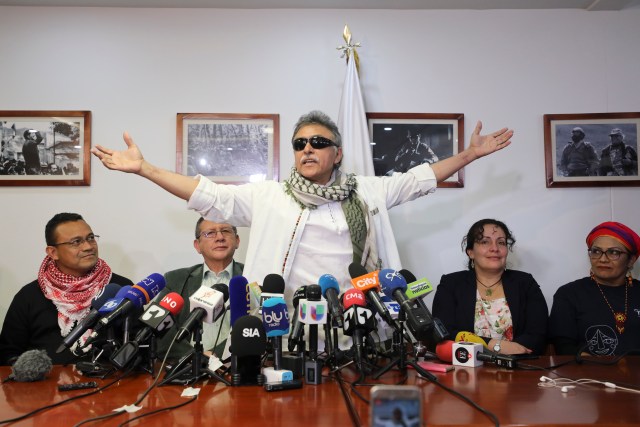
What if there was a shooting war less than three hours flight time from the U.S. and nobody heard about it?
By Francisco Toro/ The Washington Post
For two months now, Venezuela has been locked in a nasty conflict along a portion of its vast border with Colombia. The tiny war is already generating the kinds of refugee flows and human rights abuses you associate with much bigger conflicts. There are reports of Venezuelan soldiers being taken hostage by Colombian rebels. And on Tuesday, the fighting appears to have claimed the life of one of Colombia’s most powerful rebel commanders, the dissident FARC leader Jesús Santrich, who was reportedly killed in murky circumstances in the area. Details are scarce, but the outlook is grim.
Let’s back up here. Who’s fighting whom, exactly? And why? It’s complicated. But here’s what we know.
For many years now, a wide constellation of Colombian rebel groups have been crossing the border into Venezuela. At first, they would set up makeshift camps to seek shelter from Colombian military operations. Little by little, those camps became permanent. Venezuela’s leftist government barely concealed its sympathy for many of the Colombian rebels, partly because they still use the phraseology of Marxist revolution even if they spend the bulk of their time trafficking in cocaine (and also gold, coltan, diamonds, fuel and weapons,) rather than creating socialist utopias.
These groups have been operating largely unhindered in Venezuela for two decades. It’s so entrenched now that some analysts don’t think the word “Colombian” really describes them anymore. They have become binational, Colombo-Venezuelan rebel groups. The ELN, for instance — the Cuban-backed rebel group that became Colombia’s largest following the peace deal with FARC — appears to have operations at least as large in Venezuela as in Colombia.
But it’s not just ELN. It’s a whole slew of armed groups attracted by the retreat of the Venezuelan state. Dissident offshoots of FARC that did not join or broke away from the 2015 peace agreement in Colombia are out there. So are the remnants of some right-wing self-defense groups now devoting themselves entirely to the drug business. Some criminal organizations are also active near the border with Brazil. Various branches of Venezuela’s notoriously corrupt security forces strike deals with many of the criminal groups and sometimes operate as their own drug trafficking and extortion cartels as well. There are a lot of guys with guns down there, so it was only a matter of time until someone started to use them.
Bear in mind that the border with Colombia is long: more than 1,300 miles. It’s also varied, ranging from the desert scrub lands off the Caribbean to Andean mountain sierras, cattle-ranching plains and down into the Amazon rainforest. The exact geometry of relations between different armed outfits shifts every 20 or 30 miles, making it tough to make a blanket statement that will hold for the whole border region. In some areas, Colombian rebels provide the rudiments of government authority to earn the goodwill of the locals; in others they are ruthlessly extractive and violent. Relationships between them are stabilized, for the most part, by everyone’s realization that open violence is bad for business.
To continue reading click here.

